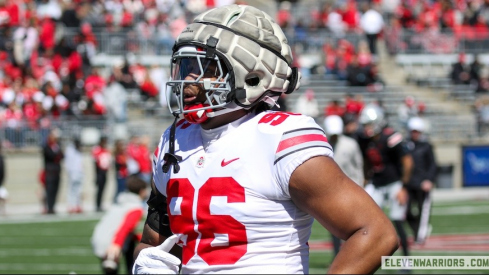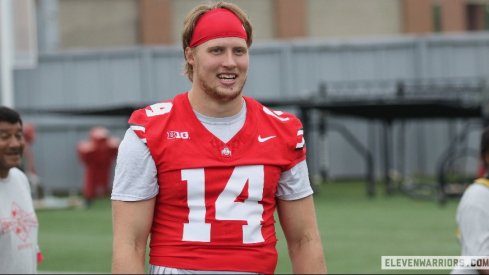 The Big Ten's first star
The Big Ten's first starEvery college football program can look back to its litany of great players – even this one – but there are a few players who served as the virtual foundation of a program’s destiny. Ohio State has Chic Harley, Army has Doc Blanchard and USC has Frank Gifford.
Illinois has Red Grange. Red Grange put Illinois and what became the Big Ten Conference on the map, and then did the same for the pros.
Red Grange was born in Pennsylvania but attended high school in Wheaton, Illinois, where his father became a police chief. Grange earned 16 varsity letters by playing football, basketball baseball and running track. To earn extra money for his family, he took a job as an ice-carrier (back in the days when ice was hauled to your house by truck) and earned the local nickname “Ice Man" (and you thought he had it first).
Putting the Midwest on the Map
Grange came to Illinois determined to run track and perhaps play basketball, but was persuaded by friends and connections back home to try out for football. Grange scored three touchdowns in his first game, a whipping of Nebraska. Illinois rode Grange to an undefeated season and a 1923 national title. In the days when college football fans tended to pay attention to teams on both coasts, Red Grange made Midwest football a factor.
In 1924, Illinois hosted heavily-favored Michigan for the dedication of Memorial Stadium. Grange returned the opening kickoff 95 yards for a touchdown, then scored three additional touchdown runs of 56, 44 and 67 yards in the game’s first twelve minutes; Michigan had not given up more than four touchdowns in 1922 or 1923 combined. A winded Grange sat out the second quarter, then ran for a fifth touchdown and passed for a sixth. Michigan’s 20-game winning streak was over, and Red Grange vaulted to national prominence. He played offense, defense and special teams during the 1924 season, showing elusiveness and a burst in the open field that defied description. Chicago sportswriter Warren Brown dubbed Grange “The Galloping Ghost.”
Grange’s career numbers don’t seem overly impressive today – a 5.3 yards-per-carry average and 31 touchdowns scored. But he was a magnificent all-around player, and his exploits were wired across the country – he even appeared on the cover of an October issue of Time Magazine. And – yes – he beat Ohio State three straight times and twice in Columbus. The Buckeyes did a good job of containing Grange, though, and lost the three games by scores of 9-0, 7-0 and 14-9. Illinois coach Bob Zuppke said "I will never have another Grange, but neither will anyone else. They can argue all they like about the greatest football player who ever lived, but I was satisfied I had him when I had Red Grange."
On to the Pros
George Halas signed Grange to a Bears contract the day after he played Ohio State in the season finale, then sent him on a 67-day barnstorming tour, from which Grange would get $3000 and a cut of the gate. Red’s decision to go pro was enormously unpopular with college administrators. “I’d have been more popular with the colleges if I had joined Capone’s mob in Chicago rather than the Bears,” Grange said.
 Grange was just as smooth off the field
Grange was just as smooth off the fieldIn an era when most professional football players earned about $85-$100 per game, Grange finished the tour with a cool $100,000 in his pocket. Though television would help make professional football the juggernaut it is today, Grange’s presence on the Bears legitimized the “mercenary” NFL at a time when college football was far more popular with the public. He appeared before a crowd of 65,000 in New York, and the proceeds from that game saved the Giants franchise from bankruptcy.
In 1927, the 5’11”, 175-pounder suffered a serious knee injury that permanently limited the speed and “hip-wiggle” that made him such a dangerous player. Grange was no longer the greatest player that ever lived; now he was just an exceptional one. He missed the 1928 season as a result of the knee injury, and finished his career in 1934. In the unofficial 1932 championship game, it was Grange who caught the winning touchdown pass from Bronco Nagurski; in 1933, his tackle at the goal line preserved another title for the Bears. Chicago won two championships thanks to the heroics of a man who was a shadow of his former self.
Life After Football
Grange was Frank Gifford before there was a Frank Gifford. He was the first professional football player to be widely showered with lucrative endorsement deals, and even starred in two movies and a 12-part cinematic serial – “The Galloping Ghost.” Grange had a career in speaking and radio, and lived quietly with his wife of fifty years. The Galloping Ghost developed Parkinson’s in the last year of his life, and died in 1991.
Legacy
It’s easy to make the argument that it was Red Grange who put Midwestern football on the map. A few programs had established themselves - Michigan, Ohio State and Nebraska, for example – but it was Grange who became the face of Midwestern football. He was not just a great player – he was a media star.
ESPN named Grange one of the top 25 college players of all time, and he was the only unanimous choice of the Football Writers Association of America in 1969 when it named its all-century team. Let’s hope Ohio State kicks the crap out of Illinois this weekend - while remembering how instrumental Red Grange was in making Big Ten football what it is today. Remember Red Grange when you watch the NFL on Sunday. Grange laid the bedrock for modern football.

